Mint pesto is a great alternative to the classic basil pesto. It is quick to make, fresh, and perfect as a sauce for pasta or bruschetta. Grandma Benedetta often prepares it in the beautiful season, always pairing it with something different: lemon, almonds and/or walnuts, parsley, cherry tomatoes, zucchini, or raw cucumbers.
My family says it tastes like toothpaste, but they like it anyway, hahaha!
MINT harvesting SEASON – it is harvested from April to October.
ALTERNATIVE pesto RECIPES
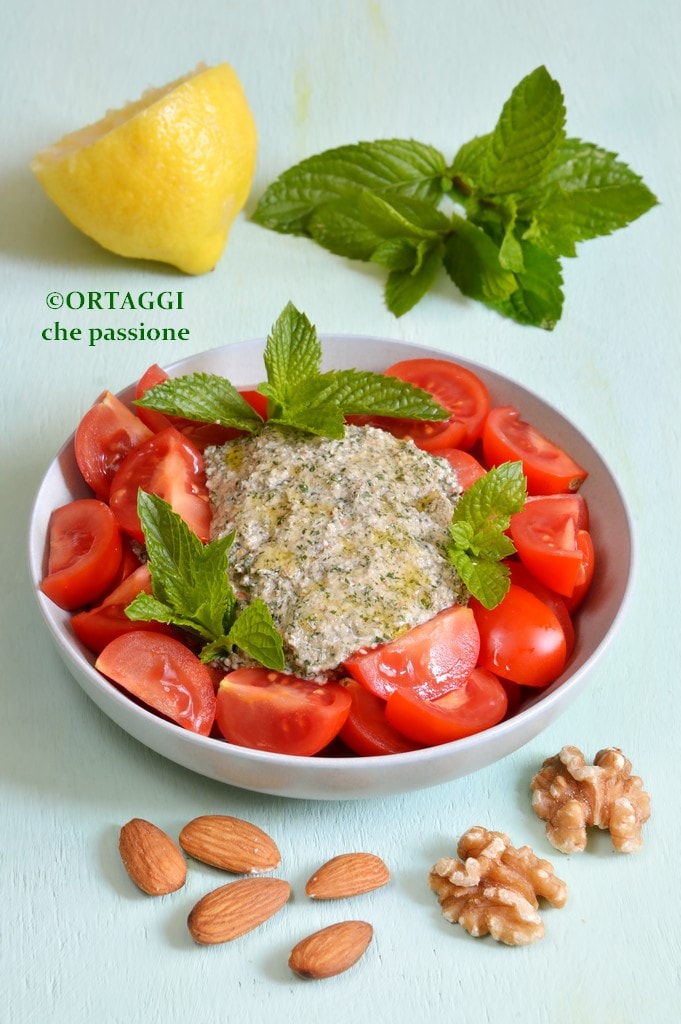
- Difficulty: Easy
- Cost: Low Cost
- Preparation time: 10 Minutes
- Portions: 4 People
- Cooking methods: No Cooking
- Cuisine: Healthy
- Seasonality: Spring, Summer, and Fall
- Energy 51.13 (Kcal)
- Carbohydrates 5.22 (g) of which sugars 3.93 (g)
- Proteins 0.36 (g)
- Fat 3.57 (g) of which saturated 0.50 (g)of which unsaturated 0.01 (g)
- Fibers 0.75 (g)
- Sodium 99.15 (mg)
Indicative values for a portion of 24 g processed in an automated way starting from the nutritional information available on the CREA* and FoodData Central** databases. It is not food and / or nutritional advice.
* CREATES Food and Nutrition Research Center: https://www.crea.gov.it/alimenti-e-nutrizione https://www.alimentinutrizione.it ** U.S. Department of Agriculture, Agricultural Research Service. FoodData Central, 2019. https://fdc.nal.usda.gov
Mint Pesto
- 0.7 oz mint (a handful)
- 1 oz nuts (choice of: cashews, almonds, walnuts, hazelnuts, pine nuts, pistachios)
- to taste fine salt
- 1 tbsp extra virgin olive oil
- 1 tbsp lemon juice (or other citrus)
- 1 tbsp water (preferably pasta cooking water)
To enrich the mint pesto, here is a list of
OPTIONAL INGREDIENTS you can add:
– garlic or wild garlic
– a hint of mustard or mayonnaise
– basil, chives, or parsley
– fresh baby spinach, arugula, or rocket
– zest (grated peel) of orange, bergamot, citron, clementine, kumquat, lime, limequat, lemon, tangerine, tangelo, grapefruit
– white or Tropea red onion (a little)
– fresh or powdered chili (a pinch)
– grated fresh ginger
– seeds like pumpkin or sunflower
– roasted peppers
– cherry tomatoes: ciliegini, datterini, piccadilly
– raw cucumbers
– grated or sautéed zucchini
– julienned carrots
– grated cheese or diced quartirolo or feta (or nutritional yeast flakes for vegans)
Mint Pesto
Wash the mint thoroughly and let it dry.
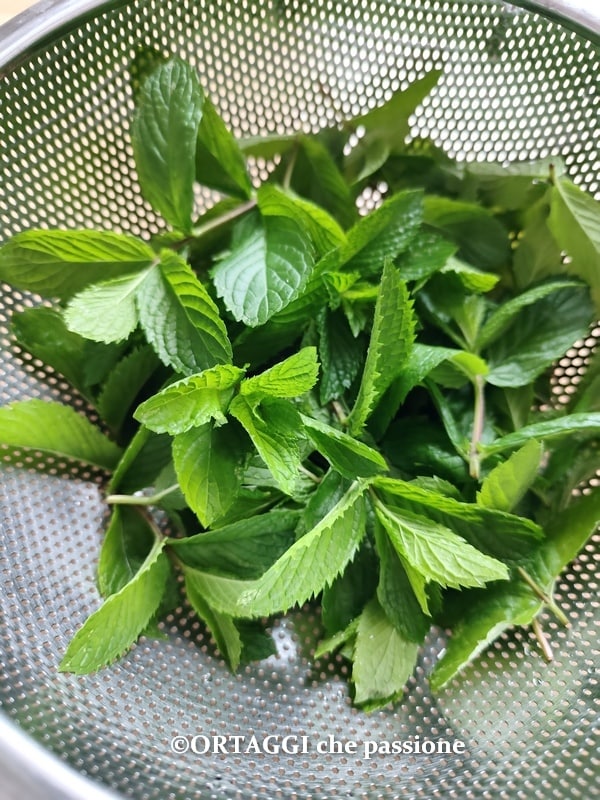
Pour the preferred nuts into the chopper, add a pinch of salt, and blend until a coarse texture is obtained.
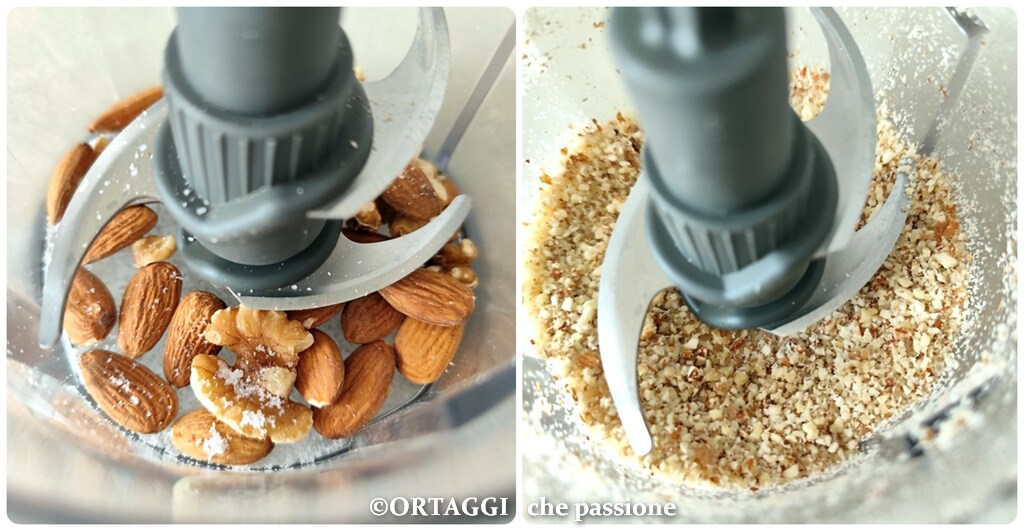
At this point, add the mint leaves and continue blending until a smooth mix is obtained.
Pour the extra virgin olive oil and lemon juice, and continue blending until the mixture becomes creamy.
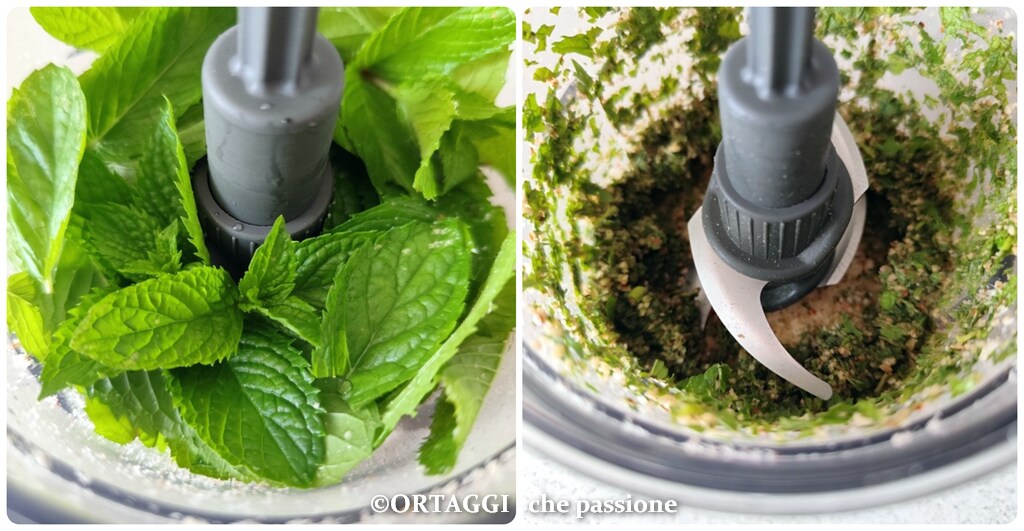
Before using the pesto with pasta, thin it out with a little pasta cooking water, stirring well until the desired consistency is reached.
Finally, mix the pesto with the freshly drained pasta. For a fresher taste, add chopped cherry tomatoes (grated raw zucchini or grilled peppers) and another drizzle of extra virgin olive oil. Mix and serve
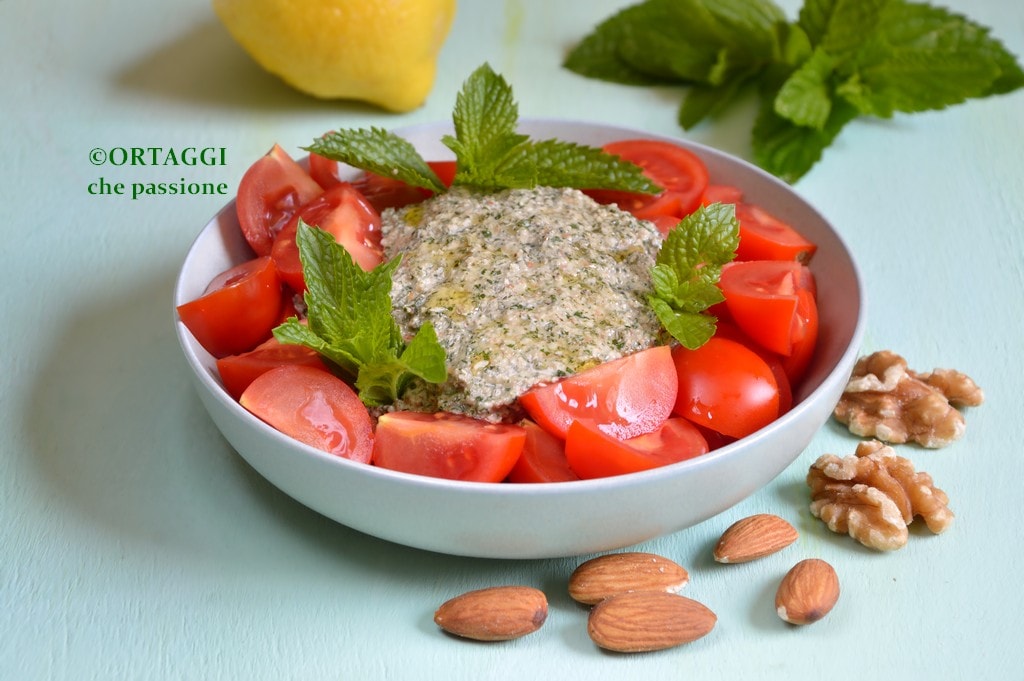
To use as a dressing for the salad, thin out the mint pesto with natural yogurt (soy for vegans) and season with a little tahini (or mustard).
While to accompany main courses for omnivores, the pesto can be thinned with kefir and mayonnaise, excellent to serve with vegetarian meatballs, fish, boiled meat or as a base for a stuffed sandwich, or bruschetta.
STORE mint pesto
Put the pesto in sterilized glass jars. Cover the pesto with a thin layer of olive oil to preserve its color and flavor. Seal the jars well and store in the refrigerator for up to 4 days.
For longer storage, freeze the pesto in small containers or ice cube trays. Thaw only the necessary amount.
FAQ
What is the difference between mint and peppermint?
Peppermint is a specific variety of mint, stronger and more pungent, with dark green leaves that are long and flat. It is often used in medicinal and food products for its higher menthol content.
How can fresh mint be preserved?
To preserve fresh mint, immerse the stems in a glass of water and place in the fridge. Alternatively, wrap the leaves in a damp cloth. You can also freeze the leaves whole or chopped in an airtight container.
What can you do with fresh mint?
Fresh mint can be added to salads, used in cocktails like the mojito, in flavored waters, make delicious tea infusions, decorate desserts and fruit salads, make popsicles, ice cream, liqueurs, and syrups. It is also perfect for flavoring sauces and dressings. Mint is used worldwide to flavor: milk, cereals, cold pasta, rice, soups, vegetables, salads, and legumes. It is also used in meat or fish fillings.
How many mint leaves can you eat a day?
Eating up to ten mint leaves per day is safe and beneficial. You can add mint to dishes and drinks for its refreshing flavor and digestive properties.
When should you not eat mint?
Avoid eating mint if you suffer from gallstones, hiatal hernia, gastroesophageal reflux, gastric ulcers, or if you are allergic.

